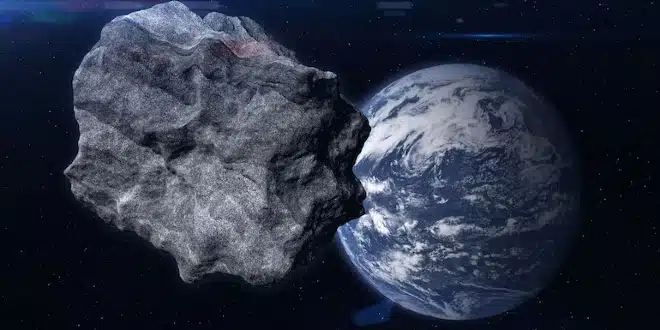NASA has identified a massive asteroid, designated 2003 MH4, that is expected to make a close approach to Earth on May 24. Measuring approximately 1,100 feet (around 335 meters) in diameter, the asteroid falls into the category of potentially hazardous objects due to its substantial size and relatively close flyby trajectory.
According to NASA’s Jet Propulsion Laboratory (JPL), asteroid 2003 MH4 will pass Earth at a distance of roughly 6.68 million kilometers. Although this distance poses no immediate danger, it lies within the threshold used to classify space objects as potentially hazardous. NASA defines any object larger than 150 meters that comes within 7.5 million kilometers of Earth as requiring observation.
Part of the Apollo Asteroid Group
This particular asteroid belongs to the Apollo class—an extensive group of near-Earth objects (NEOs) that follow orbits crossing Earth’s path around the Sun. To date, scientists have cataloged over 21,000 Apollo asteroids, making them the largest known category of NEOs. Due to their crossing trajectories, members of this group are closely watched to assess any future collision risk.
NASA monitors such celestial bodies through its Center for Near Earth Object Studies (CNEOS), which is responsible for tracking and projecting their orbital paths. The data allows experts to calculate potential risks and inform any future mitigation strategies should an object pose a significant threat.
Past and Future Objects of Concern
The upcoming flyby of asteroid 2003 MH4 comes amid heightened interest in other near-Earth asteroids that have drawn scientific attention in recent years. One such example is Apophis, a space rock initially feared to collide with Earth in 2029. Following extensive calculations, scientists have confirmed it will safely miss our planet.
Another asteroid, 2024 YR4, was previously thought to have a chance of hitting Earth in 2032. New data from the James Webb Space Telescope in April has since shown the asteroid to be larger and more solid than previously believed. While Earth has been ruled out as a target for 2024 YR4, researchers suggest it may have a chance of impacting the Moon. Observations of this object are set to continue in the coming weeks.
A more distant threat, asteroid 2025 FA22, has also made headlines. Estimated to be around 656 feet wide, its potential impact date is projected for September 19, 2089. However, the current calculated risk of collision stands at a very low 0.01 percent.
NASA’s Vigilance in Space Monitoring
NASA continues to prioritize asteroid tracking efforts, utilizing advanced observatories and telescopes to monitor developments in the near-Earth environment. By improving observational tools and refining models, the agency aims to ensure early detection and preparedness in the event of a future threat.
As asteroid 2003 MH4 makes its close approach this month, it remains under observation, but it poses no immediate danger to Earth. The flyby offers another opportunity for scientists to study the dynamics of near-Earth objects and refine strategies for planetary defense.


